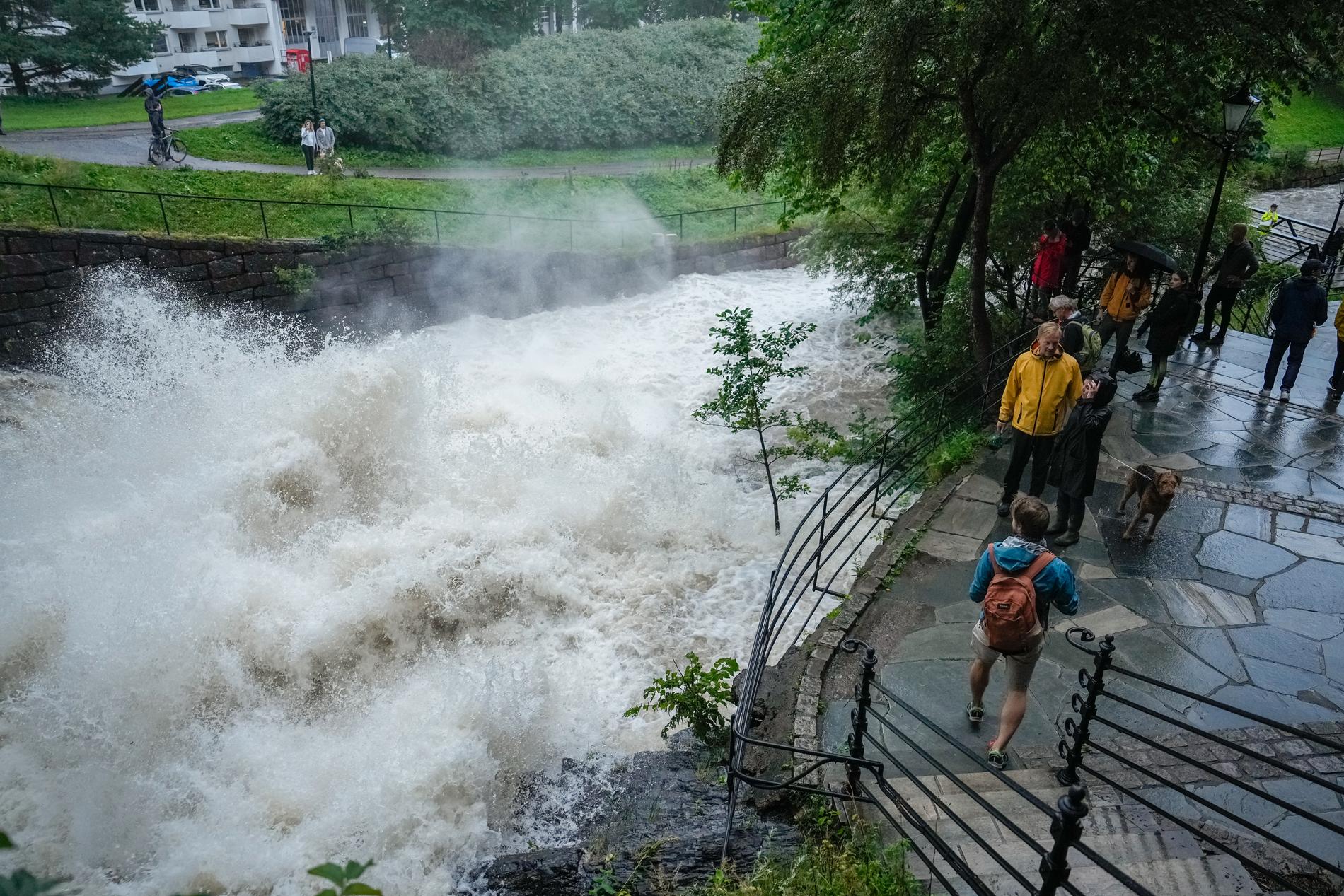1 / 5
previous
in this
full screen
Photo: Beate Oma Dahle / NTB
The Ministry of Climate and the Environment is already planning for the next extreme climate event.
Published:
Less than 30 minutes ago
Updated just now
According to Climate and Environment Minister Espen Barth Eide, such extreme climate events will become more common in the future. The Ministry of Climate and Environment is working on long-term societal solutions for extreme climate events. Barth Eide mentions, among other things, the importance of infrastructure and new buildings being planned with future climate changes in mind. view more
Extreme weather “Hans” is rolling into the country, and on Monday made its mark in several places in Eastern Norway.
VG has received photos of flooded car parks and roads that resemble rivers.
The Meteorological Institute recorded more than 800 lightning strikes within Norway’s borders in one hour on Monday afternoon.
Extreme weather was discussed in a report to the Storting delivered by Climate and Environment Minister Espen Barth Eide in June. Photo: Thomas Andreassen / VG
Take the prompts seriously
Climate and Environment Minister Espen Barth Eide calls the storm “very dramatic”.
– I am concerned about the risk it presents to life and health, but also for many people who will now suffer financial losses. We must do our best to secure ourselves and our families, he says.
He says that everyone must take the calls that are now coming seriously.
– We must secure loose objects, avoid unnecessary travel and ensure that drains are open, he says and follows up:
– This could happen again. We must both remember and prepare for that.
In connection with the storm “Hans”, NVE and the Meteorological Institute have sent out a red danger warning for large amounts of rainfall, and for landslides and floods.
Red danger warning is only used in extreme situations.
You can see which danger warnings apply in your municipality her.
also read
Extreme weather “Hans”: Check the danger alerts where you live
Here you get an overview of which hazard warnings apply in your municipality.
Barth Eide says the extreme weather we are now seeing will become more and more common in the coming years.
On Monday, he is in Rosendal, but speaks to VG via telephone:
– “Hans” hits parts of the country that are not used to extreme amounts of rainfall like this.
Long-term solutions
The minister emphasizes that short-term preparedness, such as the mobilization of the Home Guard, is the responsibility of the Ministry of Justice and Emergency Preparedness.
The Ministry of Climate and Environment has nevertheless had plenty to do in the last two days.
– Our handling consists of sending danger warnings and informing people about what is happening. In addition, we ensure that the crisis management capacity is in place, he says.
This includes, among other things, ensuring that the emergency services are both informed and operational.
– What we are really working on is the long-term societal preparation.
In June, the Ministry of Climate and the Environment sent a report to the Storting that discusses the fact that Norway will be exposed to several extreme climate events in the coming year.
– In the south of Europe, there will be more frequent heat waves and droughts. Norway also experienced that in June.
But in this country, according to the report, it is extreme rainfall, and the problems it brings, that will occur most frequently.
– It is important that we understand climate change and adapt to it in a good way.
also read
Rain, lightning and thunder: This is how “Hans” has hit Eastern Norway in the first hours
On-duty meteorologist Ranveig Eikill says that storm “Hans” has made its way into Norway.
Can open old waterways
Stormwater management is high on the Ministry of Climate and Environment’s priority list. They have proposals for a number of measures to make Norway better equipped to withstand extreme amounts of rainfall.
Among other things, the minister mentions that old waterways, such as rivers and streams, can be reopened.
– In this way, we create a run for the water on top of the earth. Which measures are right will depend very much on where in Norway you are, he says.
Must share responsibility
He also believes that infrastructure and other new buildings must be planned with future climate change in mind. It is a job that must be taken on by the state, municipalities, companies and private actors.
– We said that in June. Unfortunately, extreme weather is something we will see more often, and that is exactly what we see with “Hans”.
Published:
Published: 08.08.23 at 02:45
Updated: 08.08.23 at 03:12
Copy linkCopy linkShare on FacebookShare on FacebookShare by emailShare by email
2023-08-08 00:45:37
#climate #minister #extreme #weather #Hans #dramatic


